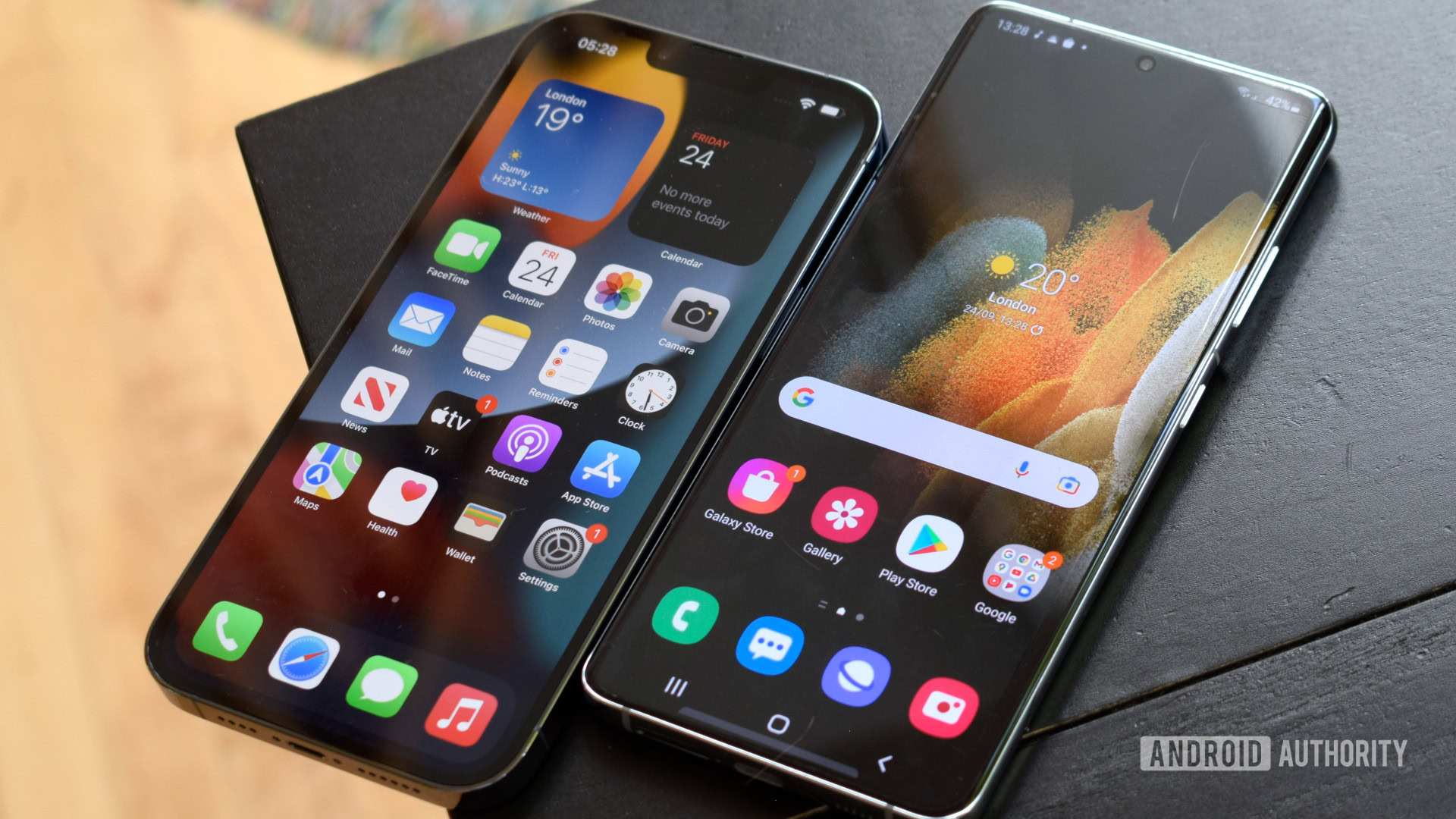
Robert Triggs / Android Authority
OLED displays have become a common sight in mid-range and even affordable smartphones over the past few years. And while not all screens are made equal, the technology has matured to the point that drawbacks such as burn-in rarely ever manifest in the real world. With these advancements, will a competing display technology overtake OLED anytime soon? And if not, how will the next generation of OLED panels outclass today’s best? Let’s discuss what the future holds for smartphone displays.
Future smartphone displays: Not microLED or mini-LED?
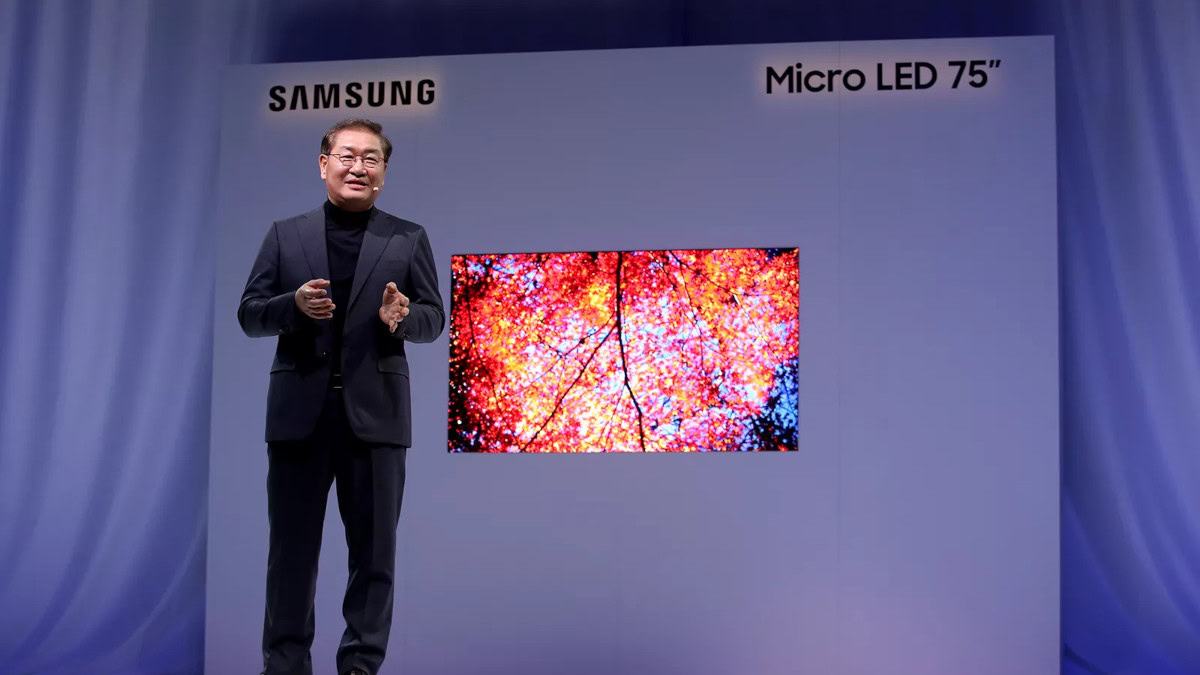
Ever since the first microLED displays appeared in 2018, we’ve been waiting for the technology to make its way to smartphones. MicroLED displays consist of millions of micrometer-sized LEDs. Like OLED, it’s also an emissive technology — each pixel can be individually controlled to achieve true black levels. MircroLED offers several benefits over existing display types, including higher brightness, high pixel density, lower power consumption, and lower risk of degradation or burn-in.
Four years have passed since the technology’s debut, though, and microLED displays are still far from mass production. It’s not hard to see why — the production process essentially involves transferring and bonding millions of microscopic LEDs while ensuring zero defects. In the context of a smartphone, the benefits might not be worth the high cost. It’s perhaps for this reason that Apple and other companies working on microLED displays are exploring its applications in AR/VR and wearables first.
Read more: MicroLED explained — The next-gen display technology
If microLED seems too far off into the future then, what about mini-LED? The technology offers superior contrast and brightness levels than any conventional LCD and doesn’t burn a hole in your pocket.
Unfortunately, mini-LED displays have failed to gain market share outside of the latest Macbook Pro models and the top-spec iPad Pro. While some reports in 2018 suggested that we’d see mini-LED displays on smartphones from Xiaomi and Huawei, nothing of the sort materialized.
OLED's economies of scale has likely made it harder for mini-LED displays to compete on price.
OLED production has likely matured to the point that it’s hard for mini-LED displays to compete with it on price — for smaller-sized screens anyway. Even Apple doesn’t seem too committed to the technology, with credible rumors suggesting that the company has ordered OLED panels from LG for future iPad models.
QD-OLED: A more likely candidate?
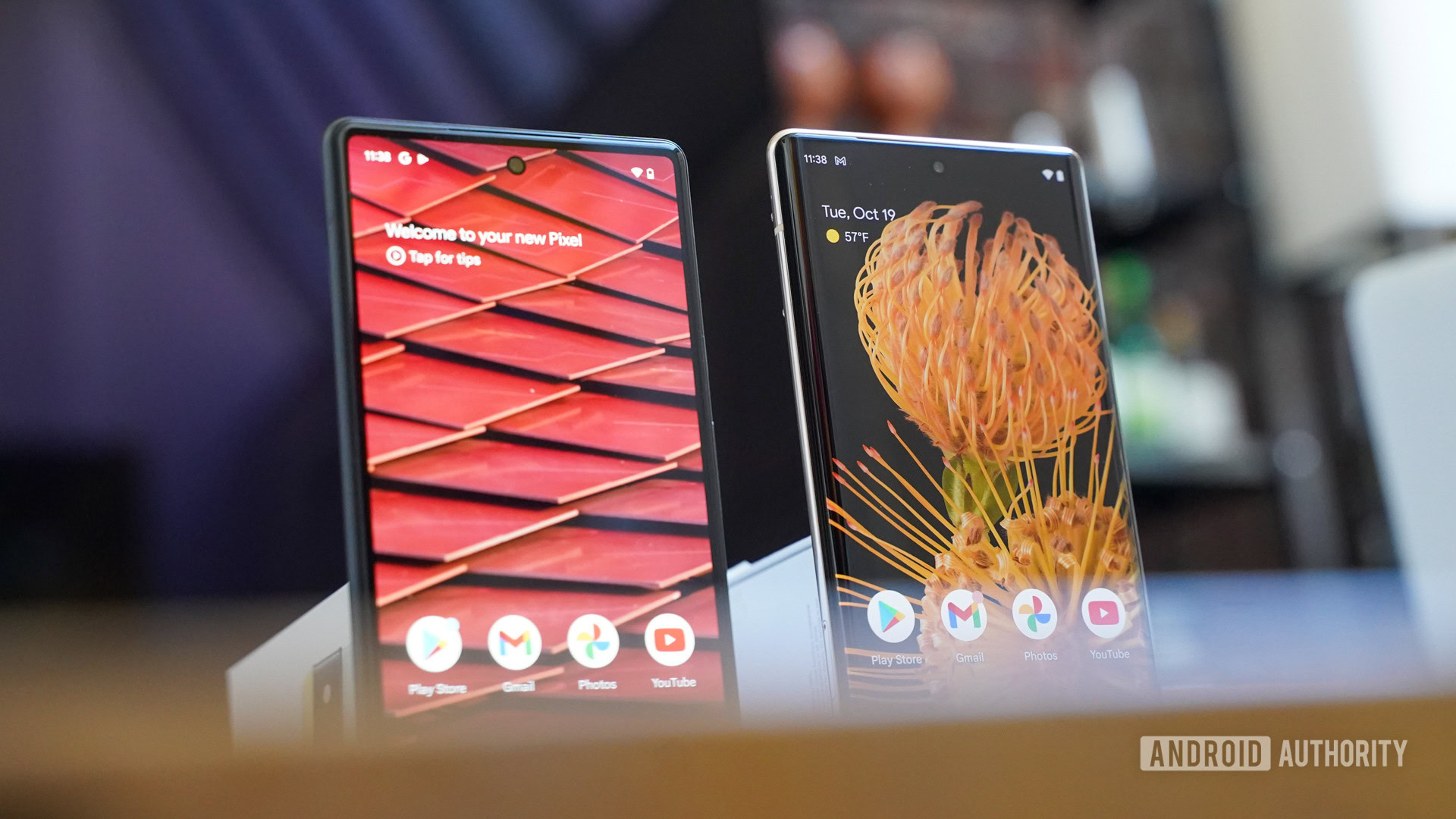
Eric Zeman / Android Authority
Samsung Display took the consumer electronics industry by storm when it unveiled its quantum dot OLED (QD-OLED) technology at CES 2022. In a nutshell, QD-OLED TVs combine the deep blacks of conventional OLEDs with the impressive color reproduction of quantum dots. The technology could open the door to displays with wider color gamuts like Rec. 2020, and higher peak brightness than conventional large OLED panels.
QD-OLED promises higher brightness and better color gamut coverage than conventional OLED displays.
However, the latest QD-OLED’s benefits in the TV market don’t necessarily translate to the smartphone industry. You see, the vast majority of OLED televisions on the market today use LG’s W-OLED panels — thanks to patents the company acquired from Kodak in 2009. LG’s W-OLED panels use white light and color filters to output red, green, and blue colors. Filtering the backlight is a destructive process that results in brightness and color volume losses. The move to QD-OLED converts colors much more efficiently, resulting in big brightness and color reproduction boosts.
Samsung-made AMOLED panels for smartphones, on the other hand, typically use a PenTile RG-BG subpixel layout, complete with individual red, green, and blue emissive sub-pixels. No filtering is required, so phone displays are already more efficient than existing TV panels. Although QD-OLED will likely offer some further improvements, it probably won’t be as drastic as the claims we’ve seen in the large-screen market.
That’s not to say that smartphone OLED panels are perfect, though. PenTile displays have twice as many green subpixels as red and blue. Consequently, the effective resolution — or what our eyes perceive — is somewhat lower than advertised. This is one area where QD-OLED panels and their uniform RGB subpixel matrix would beat today’s smartphone displays.
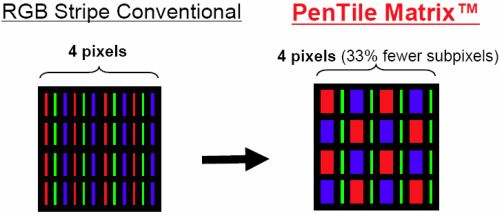
Pentile's displays have been criticized for their lower level of subpixels compared to competing displays
In 2013, Samsung explained that it had switched to the PenTile sub-pixel arrangement because the green sub-pixel is the most power-efficient. Our eyes are also more sensitive to green than red or blue, so in a PenTile display, these sub-pixels don’t need to be driven with as much current to achieve an equal perceived brightness. Finally, the reduced current flowing through the organic material translates to lower chances of burn-in or permanent color shifting.
As such, Samsung may not want to move away from PenTile-based AMOLEDs anytime soon. We also don’t know enough about QD-OLED’s power consumption and durability characteristics yet. Plus, it’s worth noting that blue emitters (essential to QD-OLED) are also the most prone to burn-in compared to red and green. Samsung could use larger blue organic emitters to offset this risk, but that’s merely conjecturing at this point.
QD-OLED seems like a promising next step for smartphone displays, but the technology is still in its infancy.
All of this is likely why Samsung Display has only demonstrated larger QD-OLED displays so far. We’ve seen no indication that it’s also working on smartphone, tablet, or even laptop-sized screens. Moreover, reports point to a rather low manufacturing yield for first-generation QD-OLED panels — only around 30% are defect-free. That’s a lot lower than AMOLED’s supposed 80-90% yield, which has allowed Samsung to drop prices and increase availability to third-party smartphone manufacturers over the years.
Considering the Korean manufacturer’s expertise with improving manufacturing yields, though, it’s likely only a matter of time before QD-OLED becomes more accessible and widespread.
Silver linings: Yearly OLED advancements
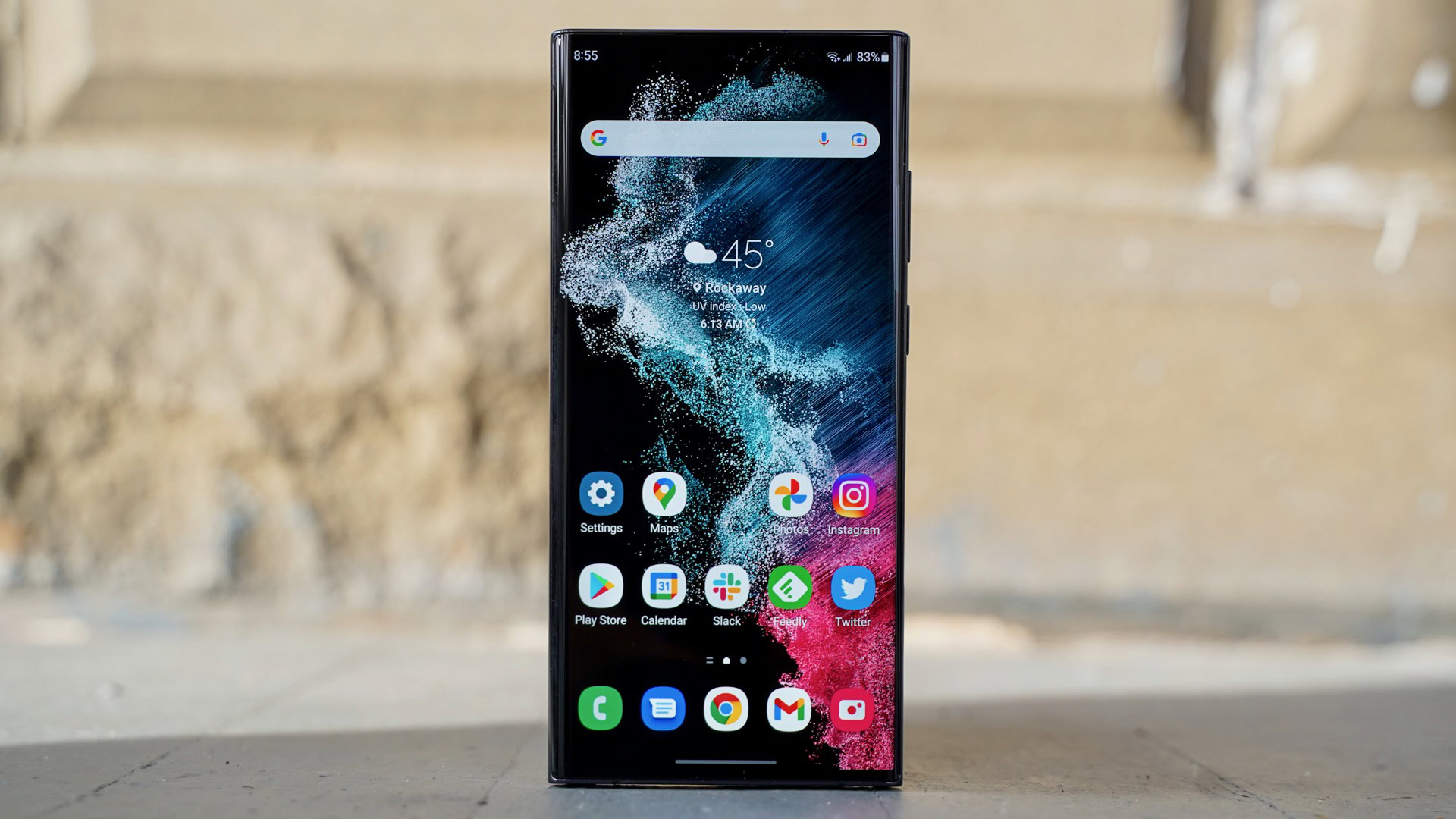
Eric Zeman / Android Authority
Setting aside emerging technologies, it’s worth pointing out that existing AMOLED displays will continue to evolve as well. Samsung Display has been incrementally improving its manufacturing process and materials consistently every year. However, the benefits take a considerable amount of time to trickle down to non-flagship smartphones.
Take the Galaxy S21 Ultra from last year, for example. It was the first smartphone to feature Samsung’s updated OLED material set, informally dubbed M11. According to extensive testing carried out by AnandTech, the new OLED emitters reduced power consumption by 25-30% compared to the previous generation.
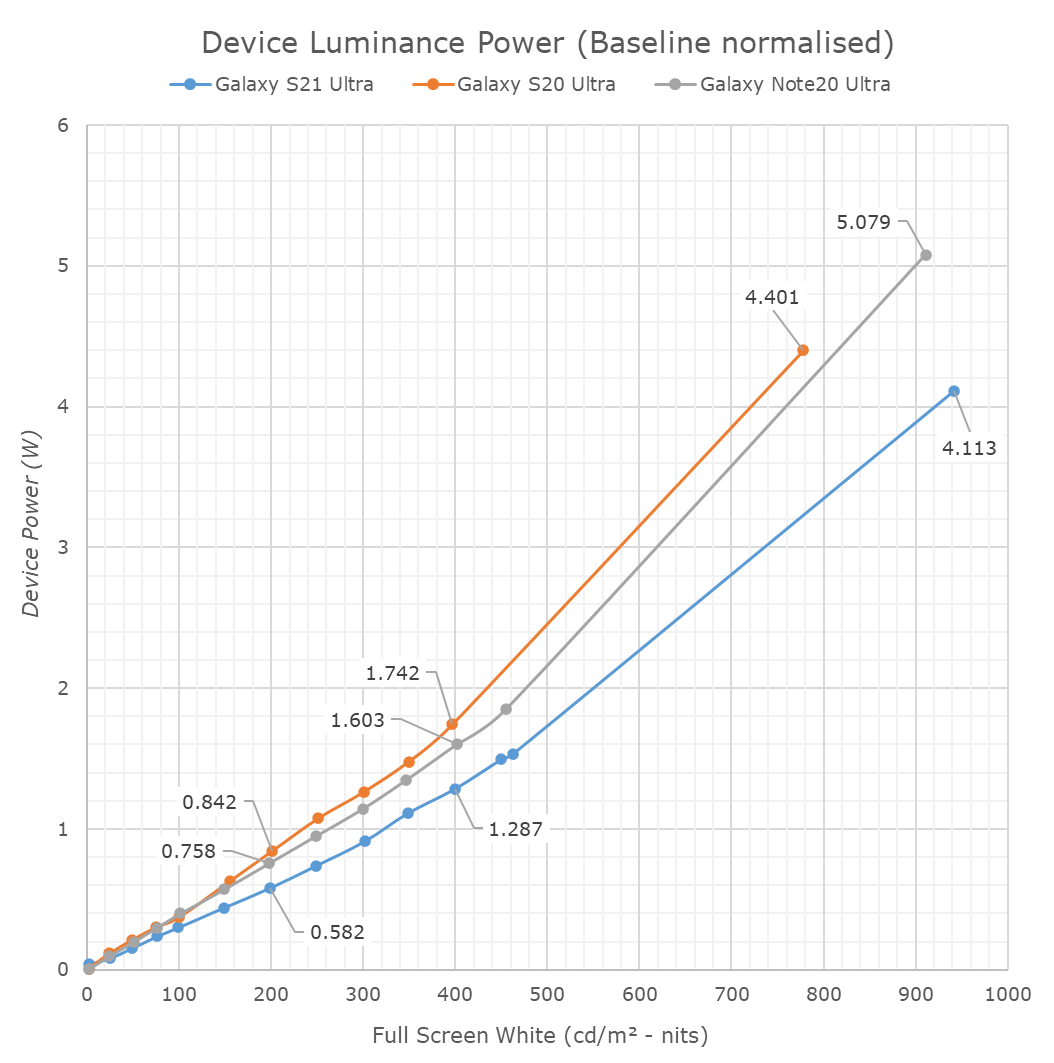
Courtesy: AnandTech
Other Samsung smartphones in 2021, including the Galaxy S21 and S21 Plus, continued to use older OLED emitters — likely as a cost-saving measure. Fast forward to today, and Samsung has reportedly brought down the latest OLED emitters to the S22 Plus, but not the base S22. And according to Korean industry news outlet TheElec, lower-end Samsung smartphones in 2022 should see a slight efficiency boost too — moving from M8 to M9-generation emitters.
Somewhat surprisingly, Samsung’s latest flagship — the Galaxy S22 Ultra — didn’t come with next-gen OLED emitters. Industry sources expect that to arrive later in 2022, alongside the company’s upcoming foldables and Apple’s iPhone 14 series.
Newer OLED panel compositions can greatly improve power consumption and battery life.
So what does all of this mean for you and me? Better efficiency, for one. Assuming new SoCs don’t require more power than previous generations, we could see better battery life in the years to come. Refinements to variable refresh rate technology should further help in this regard. For example, the Galaxy S22 series can only drop down to 48Hz, and there’s plenty of room to go lower. We’ve seen implementations as low as 10Hz in the Samsung Galaxy S22 Ultra and Oppo Find X5 Pro, and this will eventually make its way to mid-range handsets too.
Needless to say, while these improvements are pivotal for the smartphone industry as a whole, they’re especially important for the emerging foldable segment. After all, OLED is the only flexible display technology currently on the market. Somewhat disappointingly, though, if you were hoping for significant upgrades to display resolution and color gamut, you’ll probably have to wait a while longer for competing technologies to mature.
Continue reading: What are color gamuts? sRGB, DCI-P3, Rec. 2020, more
"Smartphone" - Google News
March 13, 2022 at 09:08PM
https://ift.tt/hmN405w
Beyond OLED: What's next for smartphone displays? - Android Authority
"Smartphone" - Google News
https://ift.tt/TQbBRMf
https://ift.tt/O9y5eGf
Bagikan Berita Ini














0 Response to "Beyond OLED: What's next for smartphone displays? - Android Authority"
Post a Comment